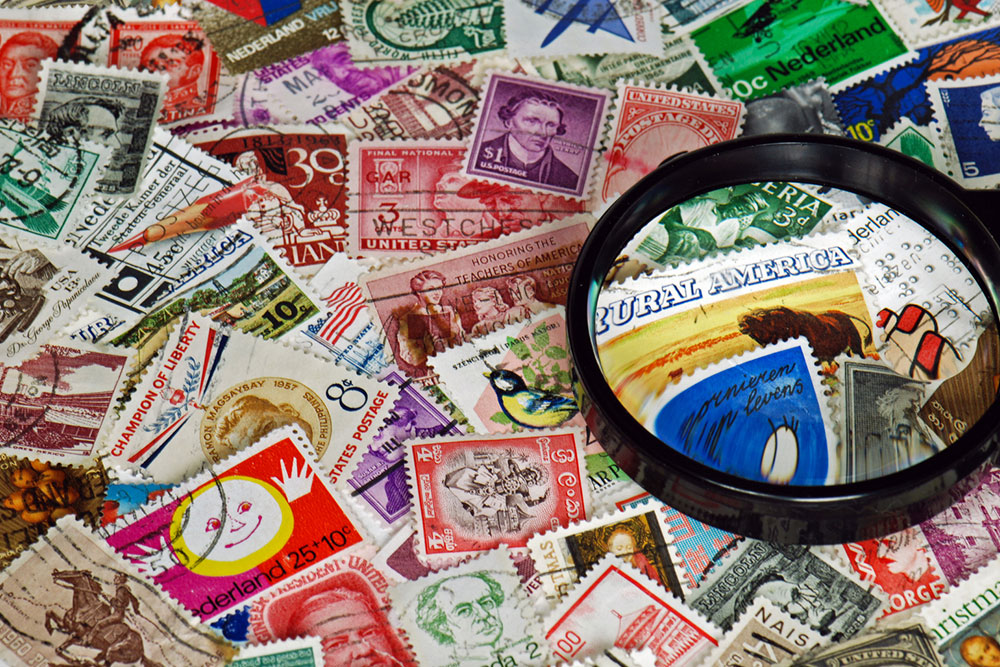12 most valuable stamps in the world

Every stamp tells a story in terms of its concept, production, art, design, usage, history, politics, technology, genealogy, economics, and important events. With so many diverse stories found in stamps around the world, it is no surprise that many enjoy collecting them as a hobby. Also known as philately, this hobby is as old as stamps themselves. So, here are 12 of the most valuable stamps in the world and the stories they hold:
Mauritius Post Office stamps
The Mauritius Post Office stamps are the most expensive stamps across the world. The current value of red one-penny stamps and blue two-penny stamps is reportedly around $12,790,600. It is believed that there are 27 examples of these stamps today. Dating back to 1847, their fame and esteemed status come from the fact that these were the first British stamps created outside Great Britain.
British Guiana 1 Cent Magenta
The British Guiana 1 Cent Magenta (1856) is the rarest stamp in the world. With only one believed to be in existence, this stamp was last sold in 2014 to Stuart Weitzman for $9.5 million. When adjusted for inflation today, its perceived value is around $11,628,700. This stamp is the only major postage stamp missing from Britain’s Royal Philatelic Collection.
Benjamin Franklin Z Grill
The Z-Grill was a 1-cent postage stamp issued by the United States Postal Service in 1868. It depicts Benjamin Franklin and is considered to be the country’s rarest stamp, with only two known examples existing today. One of them is permanently housed in a public collection in the country. Its current value is estimated to be about $4,451,000.
Swedish Treskilling Yellow
The Swedish Treskilling Yellow stamp (1855) is popular because of its misprint. It was part of Sweden’s first postage stamp production and was meant to be printed in green. There’s only one known copy of the stamp today. Although it has been sold twice in recent years, the last known purchase for this stamp was in 1993 for a whopping $2.3 million. When adjusted for inflation today, its value stands at $4,248,000.
Sicilian Error of Color
In circulation back in 1859, the Sicilian Error of Color stamp was originally meant to be orange but was misprinted in blue. There are only two known samples of this stamp today, one of which was sold as a part of the Ferrari collection. The stamp has a face value of ½ Grana. Currently, its estimated value is around $2,576,000.
Two Penny Blue
Etched in history as the world’s second official postage stamp (after Penny Black), the Two Penny Blue dates back to 1840. With a face value of 2 pence, this stamp was used in the United Kingdom for mailing heavier items. The stamp’s current estimated value is around $2,327,400.
The Whole Country is Red
The rarity of this stamp can also be attributed to a production or design mistake. This stamp dates back to 1968, when it was made to commemorate the Chinese Cultural Revolution. However, due to inaccurate mapping and boundaries in the design, it was quickly pulled out of circulation. The stamp’s current estimated value is reported to be around $2,307,700.
Alexandria Blue Boy
Most stamps in the country are issued by the federal government. However, shortly before the government took on this role, Alexandria produced the Postmaster’s Provisionals in 1847. Seven examples of this stamp exist today. Six of them are printed on buff-colored paper, while one was printed on blue. This one-of-a-kind blue stamp is now known as the Alexandria Blue Boy. Its last recorded sale was in 2019, when it fetched $1.18 million. When adjusted for inflation today, its estimated value lies at $2,040,500.
Baden 9 Kreuzer Error
The Baden 9 Kreuzer Error is another stamp that gained its rare status due to a misprint. It was originally intended to be pink. However, an ink mishap led to the production of green stamps. It dates back to 1851 when it had a face value of 9 Kreuzer. Today, this rare stamp is valued at $2,019,200.
Inverted Jenny
Misprints seem to be a common theme when it comes to stamp rarity. Only a single sheet of one hundred stamps (now known as the Inverted Jenny) was produced in 1918, making the stamps a collector’s delight today. It features an upside-down image of a Curtiss JN-4 HM plane, which was heavily used during World War I. It was also the first-ever plane used to deliver mail. The stamp has a face value of 24 cents. However, its current estimated value is around $1,631,700.
Inverted Declaration of Independence
With an original price of 24 cents, these stamps were produced in 1869 to commemorate the iconic signing of the American Declaration of Independence in 1776. However, they accidentally featured an inverted picture of the same, giving them a rare status. Today, only four examples of these stamps are known to exist. As a result of this rarity, their value is estimated to be around $1,615,400.
George Washington B-Grill
Although many George Washington stamps from 1868 are known to exist, the B-Grill is the most special of them all. Currently valued at $1,392,800, these stamps have a face value of 3 cents. They can be identified by the distinctive upward-pointing indentations and grill size. As these were quickly replaced with stamps with a smaller grill size, they gained popularity as one of the rarest stamps around the world.
Some other rare stamps from around the world also include the Red Revenue One Dollar Small, 10 Cent on 9 Candareen, 1904 Edward VII 6d Pale Dull Purple I.R. Official, and Inverted Pair Dr. Sun-Yat Sen. Their price, unique status, and history make these stamps a treasured commodity among collectors around the world.


